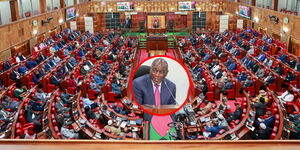The Government on Monday announced that it was working with the World Bank to develop a new unified civil servants Human Resource system, that will eventually phase out the structure employed currently.
Speaking during The 3rd National Wage Bill Conference organised by the Salaries and Remuneration Commission (SRC), Public Service Principal Secretary Amos Gathecha stated that once the system is in place, a Unified Payroll Number (UPN) will be allocated to all civil servants.
The PS revealed that the system had been piloted with the Teachers Service Commission (TSC) and would soon be extended to all government employees.
Within the new system, the government will also manage employment data for all the civil servants in a consolidated system referred to as the HRIS-Kenya web-based system.
Through this system, all government workers including those in Ministries, Departments and Agencies (MDAs) will be registered with the government later issuing the new UPNs.
Further, the PS emphasised that after the system is rolled out, the government will not allow any manual payrolls going forward.
According to Public Service data, the Unified Payroll Numbers (UPN) system generated 540,523 payroll numbers between January 2020 and March 2024.
This includes; 381,742 numbers issued to teachers under TSC which is the highest allocation.
Further, the PS also noted that the move was in a bid to ensure accountability within the public service by eliminating risks of double and multiple salaries paid to civil servants.
In a particular instance of reference, the PS stated that an audit conducted by the Controller of Budget in 2020/2021 reflected a Ksh31.2 billion variance in figures between those recorded by the Public Service and the actual salaries paid to county workers.
Additionally, the PS also noted that there needed to be an audit for the counties conducted monthly that would reveal the state of the public service.
All MDAs and counties will also be required to adhere to approved staff establishments while hiring as the data will be managed within one system.
Finally, while implementing the system, the public entities will be required to comply with the provisions of the Data Protection Act in relation to the Human Resource Data that shall be uploaded.












